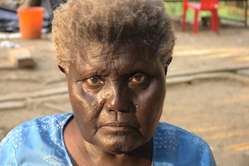| New York Times News Service | |
| Naturalist Bates observed flies that looked like bees, beetles that looked like wasps, even caterpillars that looked like pit vipers. The creatures use what are now recognised as four strategies to avoid being eaten, mimicry; concealment ; the display of warning colours; and masquerading as inedible objects, writes Sean B Carroll | |
 In the summer of 1859, an Englishman named Henry Walter Bates returned home after 11 years of roaming the vast Amazon jungle with specimens of more than 14,000 species he had collected. In the summer of 1859, an Englishman named Henry Walter Bates returned home after 11 years of roaming the vast Amazon jungle with specimens of more than 14,000 species he had collected.Just as Bates set about organising and describing his vast collection, Darwin’s ‘On the Origin of Species’ was published, which gave Bates an entirely new way of thinking about all that he had seen in the jungle. He was able to provide some fresh and very timely evidence in support of natural selection because it explained a phenomenon he had closely observed, one that intrigued him and continues to hold the attention of naturalists today: the close resemblance of some animals to living or inanimate objects. It is a pity that the work of Bates is so little known, not only because of its value but also because it was accomplished at considerable personal cost. He had travelled to South America with Alfred Russel Wallace, who was to forever live in Darwin’s shadow as the other person who came up with the theory of evolution by natural selection. Bates and Wallace arrived together in Brazil in May 1848, but split up after a year or so exploring the Amazon, ostensibly to “cover more territory.” After a year on his own, Bates nearly gave up. He had received no money from his agent in England (who was to sell specimens Bates shipped back from the Amazon). His clothes were worn to rags. He was shoeless, “a great inconvenience in tropical forests,” he noted. And he had been robbed of nearly all of his money. Just as he was planning to leave Brazil, Bates caught yellow fever and became too sick to travel. While recovering, he received money from his agent and news that his collections were a success in England. He turned around and plunged back into the jungle for eight more years. On his return to England and his encounter with Darwin’s great opus, Bates soon realised that he had noticed some things that Darwin had not mentioned but that could support his controversial new theory. Bates wrote to the famous naturalist, “I think I have got a glimpse into the laboratory where Nature manufactures her new species.” Darwin was taking a beating from critics over ‘On the Origin of Species.’ He was eager to hear whatever fresh evidence this hardy explorer could provide. In ‘On the Origin of Species,’ Darwin relied heavily on the analogy between artificial selection by humans for desirable traits of livestock and natural selection for traits in the wild. Now Bates had a whole new body of evidence for natural selection in the wild. Analogous resemblance Bates explained to Darwin that he had found many instances in which a completely harmless and potentially edible animal resembled a distasteful, inedible, noxious or poisonous species. He observed flies that looked like bees, beetles that looked like wasps, even caterpillars that looked like pit vipers. He referred to these as “analogous resemblances” or “mimetic analogies.” Bates deduced that defenseless mimics gained an advantage by resembling well-defended species. Also, that the many cases he had observed were not mere coincidences, as the mimicking forms only occurred in the same geographical area as the species they imitated. He offered the phenomenon, still referred to today as Batesian mimicry, as “a most beautiful proof of the theory of natural selection.” Some less scientific, more sentimental naturalists of the day were inclined to view these resemblances among species as merely nature’s proclivity for beauty and ornamentation. Bates countered by pointing to other kinds of imitations, like moths and caterpillars that resembled bird droppings. Where was the beauty in that, he asked? There is good experimental evidence for Batesian mimicry and the advantages gained by innocuous animals that resemble well-defended animals. But, until recently, there were few tests of how the imitation of bird waste, thorns, twigs or stones actually works. The challenge is to distinguish whether the ruse is a matter of concealment, with the predator failing to detect the animal, or a case of “masquerade,” with the predator actually detecting the imitator, misidentifying it as something inedible, and then ignoring it. Recently, biologists John Skelhorn and Graeme D Ruxton at the University of Glasgow and their collaborators Hannah M Rowland and Michael P Speed at the University of Liverpool devised such a test using the twig-imitating caterpillars of the brimstone moth and early thorn moth as prey. The hawthorn experiment For masquerade to work, a predator must have had some experience with the objects being imitated. So the scientists divided young chickens into several groups, one group was exposed to a hawthorn branch, which is a common home for the caterpillars, another group was exposed to a hawthorn branch that was wound in coloured thread in order to alter its appearance, and a third group was exposed only to an empty testing cage. The groups were then, split into three, one getting a single brimstone caterpillar, one getting a single early thorn caterpillar, and the third getting a plain hawthorn twig in otherwise empty cages. The researchers then measured how long it took the chicks with different previous experiences to attack the caterpillars, or to peck at the twig. Even when the caterpillars were the only objects in sight, birds that had been exposed to natural hawthorn branches took much longer to attack the caterpillars or the twig, several minutes on average compared with just seconds for birds that had not encountered the hawthorn branch or been exposed to the branch wrapped in coloured thread. The experiment demonstrated that the birds that had encountered the hawthorn branch subsequently misidentified the masquerading caterpillars as twigs, even at close range and in plain view. Skelhorn and his colleagues noted that at least 50 species of British moths and butterflies alone resemble inanimate objects at some point in their life cycle. The jungle creatures that enthralled Bates use what are now recognised as four distinct strategies to avoid being eaten, mimicry; concealment, known as crypsis; the display of warning colours; and masquerading as inedible objects. When Bates’ scientific paper describing various imitations was published, Darwin told him it was “one of the most remarkable and admirable papers I ever read in my life” and “it will have lasting value.” Story  | |
Wednesday, February 24, 2010
Nature’s masquerade
Monday, February 8, 2010
Extinct: Andaman tribe’s extermination complete as last member dies
 Boa Sr was the last member of the Bo tribe.
Boa Sr was the last member of the Bo tribe.© Alok Das
Boa Sr, who died last week aged around 85, was the last speaker of ‘Bo’, one of the ten Great Andamanese languages. The Bo are thought to have lived in the Andaman Islands for as much as 65,000 years, making them the descendants of one of the oldest human cultures on Earth.
Boa Sr was the oldest of the Great Andamanese, who now number just 52. Originally ten distinct tribes, the Great Andamanese were 5,000 strong when the British colonized the Andaman Islands in 1858. Most were killed or died of diseases brought by the colonizers.
Having failed to ‘pacify’ the tribes through violence, the British tried to ‘civilize’ them by capturing many and keeping them in an ‘Andaman Home’. Of the 150 children born in the home, none lived beyond the age of two.
The surviving Great Andamanese depend largely on the Indian government for food and shelter, and abuse of alcohol is rife.
Boa Sr survived the Asian tsunami of December 2004, and told linguists, ‘We were all there when the earthquake came. The eldest told us ‘the Earth would part, don’t run away or move’. The elders told us, that’s how we know.’
Linguist Prof. Anvita Abbi, who knew Boa Sr for many years, said, ‘Since she was the only speaker of [Bo] she was very lonely as she had no one to converse with… Boa Sr. had a very good sense of humour and her smile and full throated laughter were infectious.’
‘You cannot imagine the pain and anguish that I spend each day in being a mute witness to the loss of a remarkable culture and unique language.’
Boa Sr told Abbi she felt the neighbouring Jarawa tribe, who have not been decimated, were lucky to live in their forest away from the settlers who now occupy much of the Islands.
Survival’s director Stephen Corry said today, ‘The Great Andamanese were first massacred, then all but wiped out by paternalistic policies which left them ravaged by epidemics of disease, and robbed of their land and independence.
‘With the death of Boa Sr and the extinction of the Bo language, a unique part of human society is now just a memory. Boa’s loss is a bleak reminder that we must not allow this to happen to the other tribes of the Andaman Islands.’
Listen to Boa Sr singing in Bo:
Monday, February 1, 2010
New Zealand jails German caught with 44 lizards in pants
Wellington, New Zealand — Associated Press Published on Wednesday, Jan. 27, 2010 12:47AM EST
A German man who stuffed 44 small lizards into his underwear before trying to board a flight has been sentenced to prison in New Zealand for plundering the country's protected species.
Hans Kurt Kubus, 58, will spend 14 weeks behind bars and must pay a $5,000 New Zealand ($3,760) fine before being deported to Germany as soon as he is released, District Court Judge Colin Doherty ruled on Tuesday.
Mr. Kubus was caught by wildlife officials at Christchurch International Airport on South Island in December, about to board an overseas flight with 44 geckos and skinks in a hand-sewn package concealed in his underwear.
He admitted trading in exploited species without a permit and hunting absolutely protected wildlife without authority, pleading guilty to two charges under the Wildlife Act and five under the Trade in Endangered Species Act.
Department of Conservation prosecutor Mike Bodie told the court Mr. Kubus could have faced potential maximum penalties of $500,000 and six months in prison.
Mr. Bodie said the department sought a deterrent sentence for “the most serious case of its kind detected in New Zealand for a decade or more.”
The geckos may have been worth €2,000 ($3,000) each on the European market, he noted.
Customs records showed that Mr. Kubus had also been to New Zealand in 2001, 2004, 2008, and 2009. In 2008, he had been with a Swiss reptile dealer.
Judge Doherty said Mr. Kubus had come to New Zealand and set about poaching the animals in a premeditated way that would have had an impact on particular colonies.
Story
